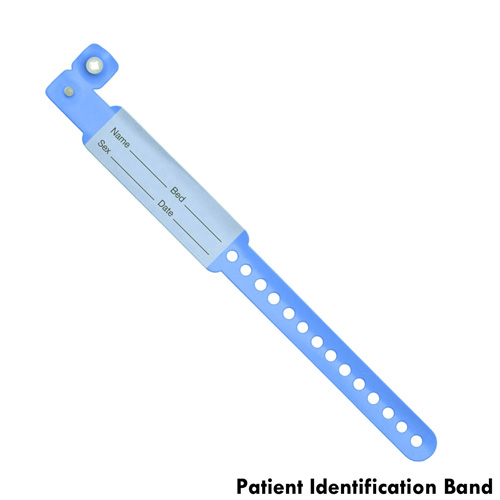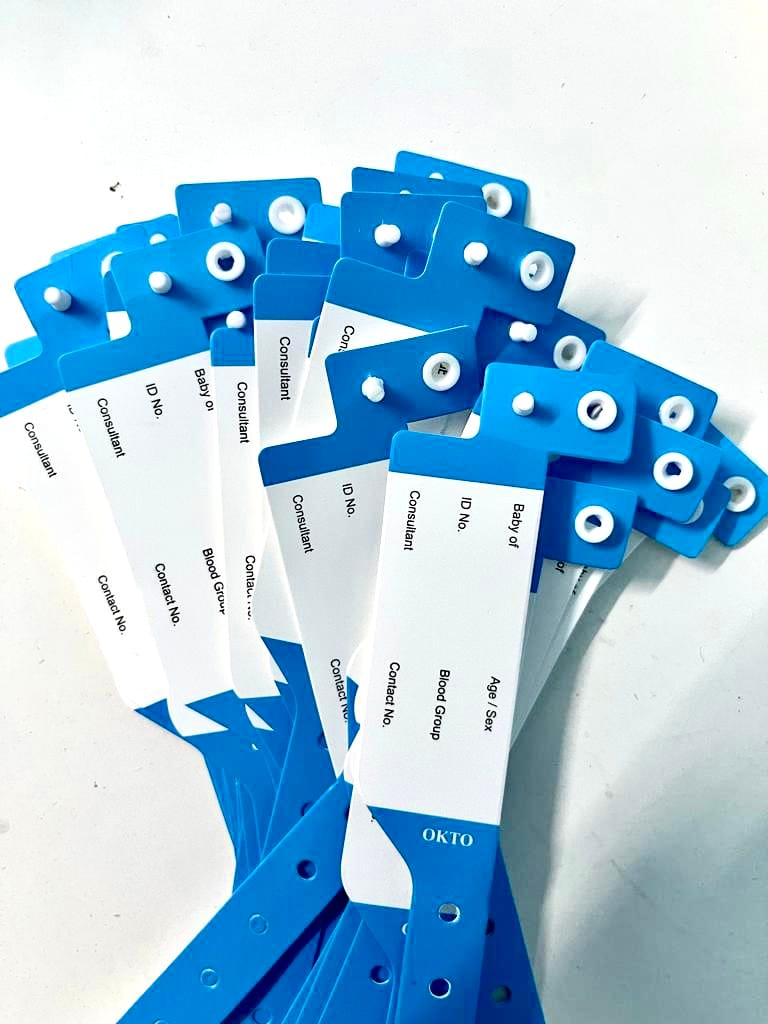Person Recognition Bands: A Key Tool for Improved Medical Accuracy
Individual identification bands represent a crucial element in the pursuit of medical accuracy and person safety within health care atmospheres. Their capability to share essential patient info, coupled with advancements such as barcode and RFID technology, positions them as essential devices for improving and minimizing errors treatment distribution. As medical care providers progressively adopt standardized methods, the effects for interaction and management performance ended up being clearer. Nevertheless, real extent of their influence on patient end results and general health care top quality warrants even more examination. What covert difficulties and opportunities exist in their implementation?

Relevance of Client Recognition
Client identification is an essential part of medical care that makes sure the safety and security and accuracy of medical treatment. Appropriate identification methods are vital to prevent clinical errors, which can lead to damaging individual end results, consisting of wrong medication administration, misdiagnosis, or unacceptable therapy plans. The importance of precise person recognition can not be overstated, as it acts as the structure for reliable communication amongst medical care companies.
In environments where multiple individuals are getting treatment all at once, the risk of identification confusion increases. Implementing durable identification systems helps minimize these risks and improves individual safety and security. Patient Identification Band. Additionally, precise recognition contributes to the integrity of clinical records, making certain that patient histories, allergies, and previous therapies are properly connected to the best person.
Moreover, conformity with regulative requirements and certification needs usually mandates rigid patient identification methods, promoting a society of liability and top quality care. Eventually, the significance of client recognition goes beyond mere administrative tasks; it is a basic aspect of delivering high-grade healthcare that focuses on person safety and improves scientific outcomes. Spending in effective identification practices is not just helpful-- it's important in today's complicated medical care landscape.
Kinds Of Client Identification Bands
In healthcare settings, different sorts of individual recognition bands are made use of to make certain precise recognition and boost safety and security. These bands work as a crucial device in preventing clinical errors connected to client misidentification.
The most common type is the standard wristband, commonly made of sturdy plastic and printed with the client's name, date of birth, and an unique recognition number. These wristbands are usually color-coded to share particular information, such as allergic reactions or various other clinical problems.
One more type is the barcode wristband, which includes a scannable barcode linked to the individual's electronic wellness record. This innovation enables effective information access and verification during drug administration and various other clinical processes.
Furthermore, RFID (Radio Regularity Identification) bands are becoming progressively prominent. These bands can connect wirelessly with hospital systems, enabling real-time tracking and recognition of individuals, consequently improving and simplifying operations individual safety.

Advantages for Doctor
Using person identification bands offers substantial benefits for medical care companies, enhancing both functional effectiveness and person safety. These bands act as a vital tool in streamlining patient monitoring processes (Patient Identification Band). By guaranteeing accurate identification, doctor can minimize the threat of administrative mistakes, such as mislabeling examples or misdirecting treatments, which can cause costly hold-ups and problems
Moreover, person identification bands facilitate smooth communication amongst the health care group. With easily available and standard patient details, providers can make informed decisions swiftly, improving total workflow. This effectiveness is especially vital in high-pressure environments such as emergency situation departments, where time-sensitive treatments are crucial.
The implementation of identification bands likewise supports conformity with regulatory requirements and ideal practices, thereby lessening the danger of lawful effects stemming from identification mistakes. Furthermore, using these bands enhances information precision in digital my website health records, resulting in far better treatment sychronisation and connection.
Influence on Patient Safety
Precise patient identification is a keystone of health care safety and security, significantly minimizing the possibility of mistakes that can compromise patient well-being. Using client identification bands is important in making certain that each patient gets the right treatment, drugs, and procedures. These bands act as a reputable reference factor for medical care professionals, lessening the risk of misidentification, which can lead to major consequences such as inaccurate medication management or medical mistakes.
The execution of standardized client identification bands contributes to a culture of safety within healthcare setups. By providing clear, quickly legible details, these bands help to enhance the relevance of confirming individual identification at every stage of care. They assist in interaction among staff participants, ensuring that everyone entailed in an individual's treatment is mindful of their details requirements and needs.
On top of that, utilizing client recognition bands can enhance the accuracy of electronic health and wellness records, better reducing the capacity for mistakes - Patient Identification Band. By prioritizing individual safety and security via effective recognition methods, healthcare providers can promote trust fund and confidence amongst patients, eventually bring about better clinical results and boosted client contentment. The impact of appropriate person identification can not be overemphasized; it is a fundamental component of high-grade medical care distribution
Ideal Practices for Implementation
Reliable implementation of person identification bands is important for improving individual safety and reducing errors in health care settings. To accomplish this, health care organizations must embrace several ideal techniques. Team training is vital; all group members should recognize the significance of accurate patient recognition and the treatments for band application. Routine training sessions and refresher courses can guarantee ongoing conformity.
Second, the layout of the recognition bands should focus on visibility and durability. Bands have to be very easy to read, have vital person information, and endure daily wear. Making use of color-coding can additionally boost fast identification.


Third, incorporating digital health records (EHR) with recognition band systems can improve process. Automated informs for inconsistencies in client identification can prevent possible errors prior to they happen.
Finally, conducting regular audits and responses sessions will aid determine areas for enhancement. Engaging personnel in these discussions cultivates a society of safety and liability.
Conclusion
In verdict, person identification bands play an important duty in boosting clinical accuracy and ensuring client security within health care systems. Embracing best methods for application cultivates a society of safety, inevitably leading to boosted patient outcomes and greater depend on in health care services.
Client recognition bands stand for a vital element in the pursuit of medical accuracy and client safety within healthcare environments.Utilizing client recognition bands uses substantial benefits for medical care providers, boosting both functional efficiency and patient right here safety and security. By focusing on client safety through effective recognition methods, health care service providers can foster trust fund and confidence among individuals, sites ultimately leading to better professional results and improved person contentment.Reliable implementation of person recognition bands is crucial for enhancing client security and lessening errors in medical care setups.In conclusion, person recognition bands play a vital function in enhancing medical precision and guaranteeing patient security within healthcare systems.